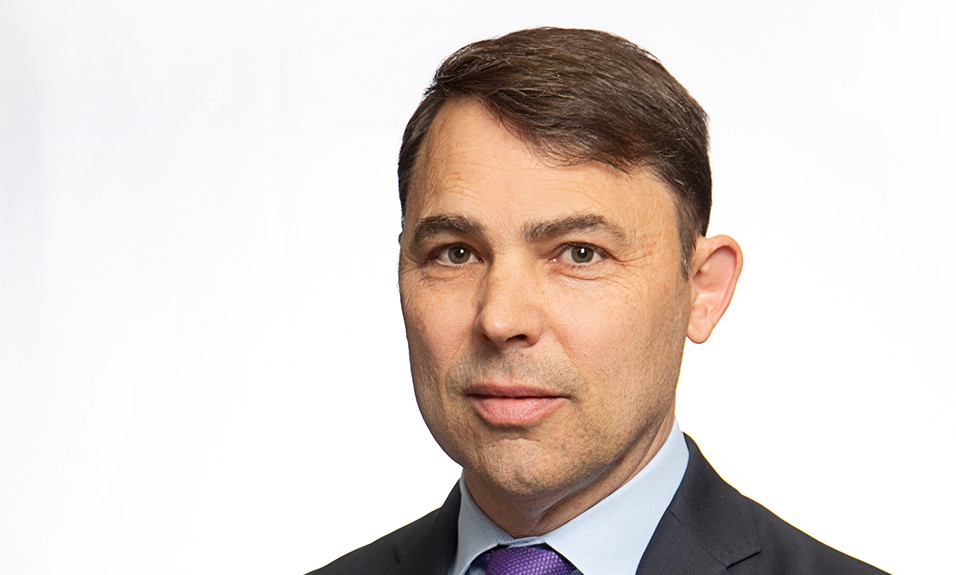It’s not enough just to tick off the boxes of sobriety. For prolonged recovery, the skills of staying sober have to become a routine part of a life of personal growth
By Ryan Blackstock, Psy.D.
Over my career, I’ve been asked countless times about the “secret” to lasting recovery. I don’t think it’s so much a secret, but more of a definition that helps guide recovery behavior over the long term. So here it is: If you want lasting recovery, then recovery itself must become a lifestyle.
The goal from this point is to talk about what that means and how it is achieved. A mentor along my path, the great Tom Foley, helped me see this idea many years ago. We were talking about the terms and definitions of recovery and their significance. I really liked what he arrived at as a base definition of recovery. He said something to the effect of, “Recovery is a lifestyle with its foundation based in abstinence and personal growth that persists across the good and bad times that life throws at us.” This made a lot of sense to me, and still does. People often equate recovery with the practice of abstinence/staying sober/being drug-free, etc., but that’s really just the starting point.
The task from the beginning is to translate the basic skills of staying sober—such as managing your environment, delaying impulses and learning coping mechanisms—to an automatic and habitual practice that’s congruent with one’s values and goals in life. Sometimes clients don’t have a good picture of what a recovering lifestyle looks like or what that means, so I ask them to consider that in their active addiction, they may have engaged in an addictive lifestyle. If I had to ballpark a definition for an addictive lifestyle, it would be one based on using or drinking and protecting the ability to continue to do so across both the good and the bad times. As you can see, that definition mirrors the one for recovery.
Where to Start with a Recovery Lifestyle
A lifestyle is made up of social and interpersonal factors, activities, behavior and values that drive and give focus and purpose to living. It is shown through consistency and usually becomes connected to our sense of identity. But where do we start?
When I was working for treatment centers in the ’80s and ’90s, we used to tell our new clients, “You essentially have to change everything except your brand of cigarettes.” (Believe it or not, people used to smoke in hospitals while in treatment!) Although that was an exaggeration, it showed that no stone could be left unturned when making changes that would be lasting and enduring. One of the challenges of working with clients newly getting sober is what I call the Effort Paradox. The paradox is this: Someone would go to nearly any length to acquire and use drugs, regardless of the consequences, yet often applies minimal effort in the early stages of sobriety. It’s quite common that a new client will balk at the idea of going to meetings, that an hour is too much time—yet they have usually spent much more time on a daily basis thinking about using (preoccupation and planning), using, and/or recovering from the effects of using. Helping clients reframe this dynamic becomes important in terms of getting them to buy in to staying sober.
Clients often worry that they’re going to have boring lives now that they’re sober, but I assure them that the folks in the 12-step meetings are still rowdy and gregarious, that they share a sense of recovering camaraderie that is powerful.
Often in the beginning, achieving recovery is just following a list of tasks that must be done, possibly combined with external pressure or pending consequences. The most common form is the court-ordered client, who, if they don’t jump through all the right hoops, will remain on probation, not be eligible to reinstate their driver’s license, etc. Other sources of pressure and consequences could come from the threat of divorce, or even from health concerns. When I look at people who put together, say, a year of substance-free time but then return to use shortly after getting off probation (or even getting out of long-term treatment), I conclude that they failed to develop a recovery lifestyle, and instead saw recovery as a series of short-term tasks. Rather than embracing a holistic change, they see the task of recovery as a laundry list of things to do.
What Makes Up a Lifestyle
In order to embrace any lifestyle, you must understand that there are activities that characterize it. Let’s look at a few other examples before we tackle recovery. I’ve always been a fan of rock music and rock stars, and I think most people of whatever musical taste can tell you something about a rock star’s lifestyle. First, it’s based around music and image. In some ways, rock stars present themselves as larger-than-life. It also has to do with who you’re surrounded with. Rock stars have a crew, and groupies, and sometimes bodyguards. Rock stars stay up late into the night and sleep during the day. They might be promiscuous, often wear sunglasses when out in public or for interviews, and probably fight with their bandmates from time to time. They also spend extravagant amounts of money on luxury items. This is, of course, a broad description of a rock star, without inserting drugs or alcohol into the mix. Try this for yourself. What constitutes a rock-star lifestyle?
If we look to people who achieve a successful recovering lifestyle, they often talk about gratitude, as well as the concepts of honesty, open-mindedness and willingness.
On a more serious note, we could look at the lifestyle required by having diabetes. My father was diagnosed with diabetes as a teenager, and so he had to embrace a diabetic lifestyle somewhat early on. Part of his everyday routine was to check his blood sugar levels, give himself insulin shots, stay on a healthy diet, and exercise. This was his regimen. He was not without lapses, but those periods came with frightening consequences. In the big picture, the groceries he bought, the way he spent his free time, what he needed to take with him when he traveled and his daily regimen were consistent and allowed him to live until the age of 60. So consistent was his routine that at his funeral, people he went to fantasy baseball camp with recalled that he would be checking his blood sugar levels in the dugout. It was one of the ways he was remembered.
In both of those cases—rock star, diabetic—the lifestyle has to do with consistent attitudes, behavior and activities, and interpersonal aspects. I believe that the foundation for the recovering lifestyle can be set by engagement with a healthy 12-step community. That’s not the only way, but it has its advantages.
Personal Growth and the Recovery Lifestyle
Back to the definition: Recovery is a lifestyle with its foundation based in abstinence and personal growth that persists across the good and bad times that life throws at us.
The foundation is set by not using alcohol or drugs (abstinence) and by personal growth. I have always viewed the 12 steps as a platform for personal growth. They have been applied to many other problems beyond addiction, and non-addicts benefit from them. There’s a book in my office by Jerry Hirschfield, PhD, called The 12 Steps for Everyone … Who Really Wants Them, which I’ve had since the late ’80s. If you want personal growth, the 12 steps are a fine way to gain that. Certainly, traditional therapy, attendance at spiritual retreats and a variety of other things can contribute to personal growth.
What are the attitudes of a person in recovery? I think if we look to people who achieve a successful recovering lifestyle, they often talk about gratitude, as well as the concepts of honesty, open-mindedness and willingness. They often attend 12-step meetings on a regular basis because their personal growth is reinforced both by the relationships they establish there and by being able to reflect on their growth by seeing their old selves in the newcomers.
It’s important to spend time with others who share your lifestyle. People who are successful in recovery spend time with others who are successful in recovery.
As I sit at my keyboard, I’m reminded of the line in The Shining: “All work and no play makes Jack a dull boy.” Part of having a lifestyle of recovery involves incorporating sober leisure activities and fun. Clients often worry that they’re going to have boring lives now that they’re sober, but I assure them that the folks in the 12-step meetings are still rowdy and gregarious, that they share a sense of recovering camaraderie that is powerful, and that my client’s job is to tap into that spirit right away.
In terms of values, often it isn’t about finding new ones but returning to old ones that got lost, or that were drowned in the throes of addiction. Connection, trust, freedom, family and having purpose are common values that come up. Each takes work, because addiction is so pervasively damaging across a life, but these values can and do rise to the surface again in time and with work. Part of the cleansing nature of steps 4-9 is to bring us back to those positive values that guide us. Sometimes this is also known as a “restoration to sanity.”
At the interpersonal level, it’s important to spend time with others who share your lifestyle. Rock stars hang out with rock stars. They have a clique, an inner circle that the general public doesn’t usually penetrate. It’s often the same for recovery. People who are successful in recovery spend time with others who are successful in recovery. But it’s not completely insular, because when a certain point is reached where the lifestyle is beginning to become stable, this is often where I see people in recovery reach out to others in need.
Make Recovery Your Core
The last point I want to make about recovery as a lifestyle is that it has to extend beyond the 12-step meetings and fellowship. Some people build their new lifestyle around the 12-step fellowship, and that’s fine. For me, the real test of a lifestyle is that you can apply it across all areas of your life and across the worst of situations. It means that whatever values I embrace in my recovery, those values translate into all the social roles I have—family member, neighbor, employee, coach, customer, student, etc.
Establishing this lifestyle takes time, practice and hard work. But it also becomes a force that we begin to tap into without effort, one that sustains us through hardships and often inspires others.
Remember how I said at the beginning of this article that the secret isn’t really a secret, it’s just a matter of understanding the definition? If you’re in the 12-step fellowship, you will probably recognize this last piece. If not, here it is. Step 12 says “Having had a spiritual awakening as the result of these steps, we tried to carry this message to alcoholics and to practice these principles in all our affairs.” Those final words—“practice these principles in all of our affairs”—refer to adopting a recovery lifestyle. I tell my clients that anyone can look good in a meeting, but it’s what you do across the other 23 hours of the day that really matters. Recovery is at your core—it’s a part of who you are, and the values of recovery and integrity persist despite all sorts of tragedies: unexpected loss, divorce, a cancer diagnosis, death of a parent, financial ruin and so many other pains that occur in life. Establishing this lifestyle takes time, and practice, and hard work. But it also becomes a force that we begin to tap into without effort, one that that sustains us through hardships and that often inspires others to live up to their full potential.
Ryan Blackstock PsyD, LP, CAADC received his doctorate of psychology from the Center for Humanistic Studies in 2006 and has worked as an addiction counselor since the early 1990s. He earned a distinguished service award from the National Kidney Foundation (Michigan chapter) for pioneering a substance abuse education program for people awaiting organ transplant. Blackstock teaches at the Michigan School of Psychology master’s program. In his free time, he enjoys game design, playing heavy metal and studying symbolic aspects of ancient Egypt.
Photo: Willian Justen de Vasconcellos














